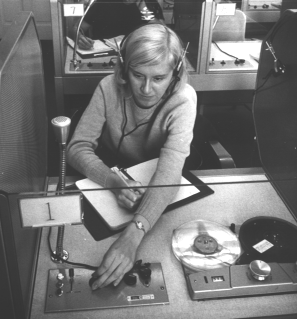Pam Takayoshi and Cindy Selfe (2008) note in Multimodal Composition, “The texts that students have produced in response to composition assignments have remained essentially the same for the past 150 years. They consist primarily of words on a page, arranged into paragraphs. This flow of words is only occasionally interrupted by titles, headings, diagrams, or footnotes” (p. 1). Despite the persistence of this model of writing, multimodal composition assignments have been increasingly introduced into traditional composition courses. These multimodal texts “exceed the alphabetic and may include still and moving images, animations, color, words, music and sound” and consist of web pages, films, and podcasts in addition to print-image hybrids such as brochures (p. 1). In addition, more “low-tech” modes for non-print composing, such as sculpture and collage, are included in this broad definition.
Often multimodal assignments take advantage of Web 2.0 technologies that include social networking sites such as MySpace or file sharing sites such as Flickr, yet more importantly place emphasis on immediate, content-driven publication rather than a knowledge of programming skills (Peek, 2005, p. 17). Still, these increasingly technological texts remain the exception, not the norm. While students often compose via multiple modes in their non-academic lives, connections between in- and out- of class literacies are not explicit for many students.
Writing instructors who incorporate multimodal assignments cite existing student interest and engagement with multimedia (and therefore, an assumed increased interest in the multimodal composing process in general), a need to provide students with successful communication skills in both print and electronic environments as students learn and work in both, and a desire by instructors to teach writing skills that are relevant (Selfe & Takayoshi, p. 3-5). Multimodal instructors recognize it is not enough for students to merely analyze web texts and compose traditional print-based texts in response. Alan Rea and Doug White (1999) note that traditional rhetorical concerns persist in web environments; however, students cannot effectively critique web texts without experiencing the web composing process firsthand. Instructors of multimodal composition therefore “face the challenge of deciding how to incorporate various media into writing classes in ways that are not only fiscally and technologically viable but also pedagogically and ethically sound” (Turnley, 2005, p. 146).
Who Does Multimodal Composition?
Despite growing research, there remains a limited picture of where and how institutions integrate multimodality within writing courses. As part of a research initiative to learn more, Anthony Anderson et al. (2006) surveyed a group of composition instructors from a range of schools with the end goal to “learn more about what Composition teachers were doing with multimodal composing, what technologies they used in support of composing multimodal texts, and how faculty and administrators perceived efforts to introduce multimodal composition into departmental curricula and professional development” (p. 63). Based on survey results, the authors surmise that most multimodal projects were efforts of individual instructors rather than programmatic or institutionally driven projects. Moreover, the researchers find that while English departments are not necessarily hostile to such efforts, “Few survey respondents who wanted to learn about digital media and multimodal composition had enjoyed the support of comprehensive, cohesive, or effective professional development opportunities offered by their departments or universities” (p. 79). Study results confirm that most multimodal composition efforts are scattered and lack integration within writing programs in any systematic fashion.
Survey results (though acknowledged as limited by the authors) also suggest that most multimodal composition efforts are coming from large public and private institutions, particularly highly ranked schools such as Michigan State University and the University of Notre Dame. Out of the 31 schools represented, only one, Lynchburg College, has a population of less than 5,000 students, and nearly all have populations over 10,000 students. In addition, over half of the institutions surveyed have established doctoral programs in rhetoric and composition where it can be assumed that some groundbreaking work in computers and composition is in progress (p. 66). For the WPA or composition instructor at a small liberal arts college, the literature does not provide a clear picture what, if anything, liberal arts colleges are doing to incorporate multimodality. While a few studies portray general differences between smaller and larger schools that may affect how a multimodal composition course or program is implemented, this lack of literature is consistent with lack of literature on writing program administration at small schools. Such literature fails to describe the “material conditions of small-school WPAs, the nature of composition programs at small institutions and the small-school contribution to the growing WPA culture” (Amorose, 2000, p. 85). Scholarship on multimodality in the composition classroom is growing in general, yet scant research exists on liberal arts colleges incorporating these efforts. As a first step, The University of Findlay composition faculty have started documenting changes we have made and recording meetings where we discuss changes. This representative audio excerpt, described more fully in the section “Implementing a Multimodal Composition Initiative,” is an early effort to start documenting multimodal efforts at one liberal arts college.
